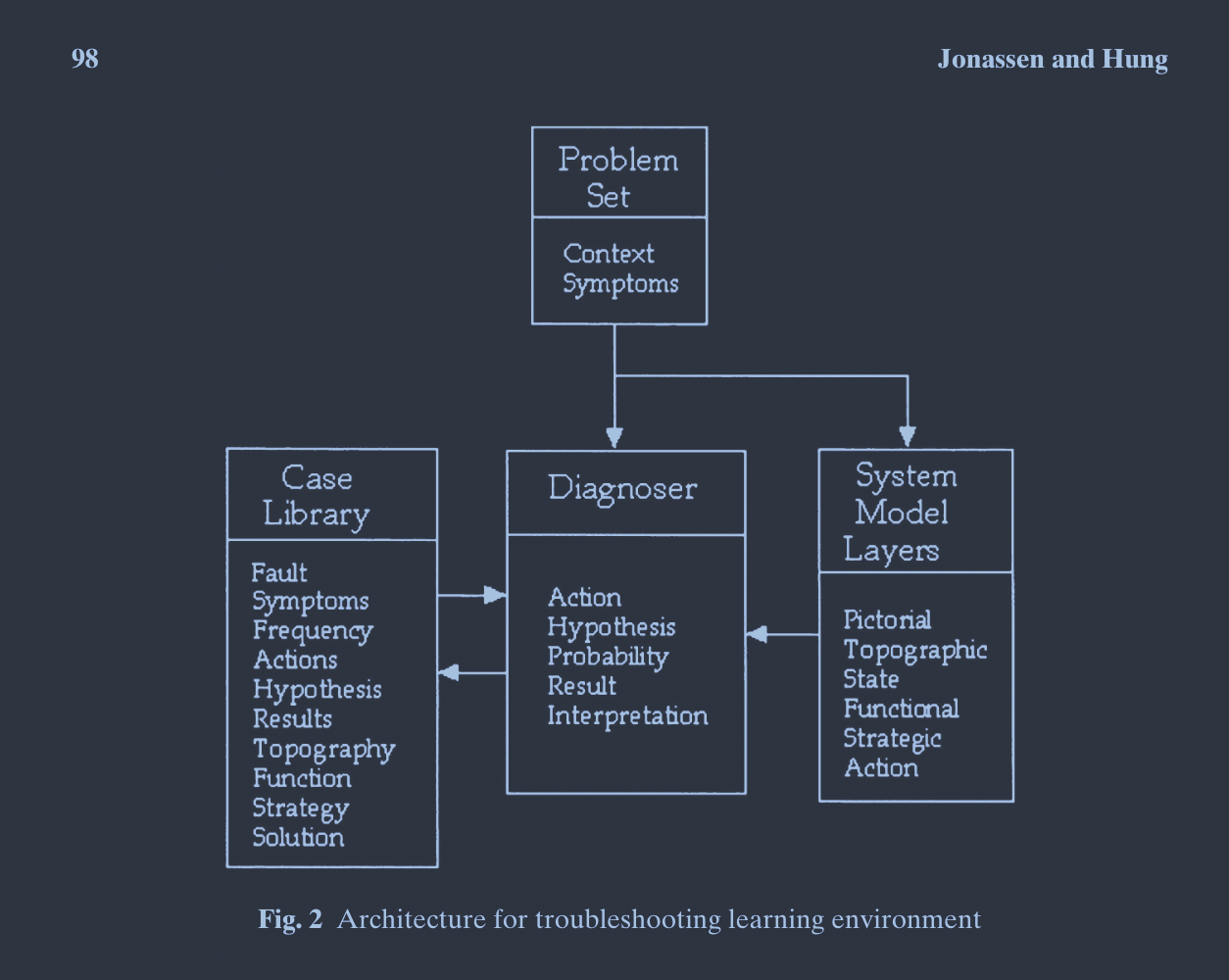Jonassen and Hung: Learning to Troubleshoot: A New Theory-Based Design Architecture
[1] D. H. Jonassen and W. Hung, “Learning to Troubleshoot: A New Theory-Based Design Architecture,” Educ Psychol Rev, vol. 18, no. 1, pp. 77–114, Mar. 2006, doi: 10.1007/s10648-006-9001-8.
- Generic paper on mechanisms that people use to learn how to troubleshoot and debug
- Notes that working memory, analytical reasoning, and casual reasoning are all important aspects of effective troubleshooting
- Also goes through the various ways that people have been taught how to troubleshoot in the past, such as procedural demonstration, conceptual instruction, rule-based approaches, simulations, and intelligent tutoring systems
Coginitive Model of Troubleshooting
- Construct problem space (novice troubleshooters will rely on external problem representations)
- Identify Fault Systems
- Diagnose Faults (experienced troubleshooters will categorize problems based on prior experiences)
- four types of hypotheses generated:
- system: fault at the system level
- subsystem: fault at the subsystem level, reduces the problem space to a discrete subsystem
- device: reduces it to a specific device
- component: reduces to a single fault at the component
- it seems this categorization is mostly just general, isn’t what’s important the ability to drill down into specific sections
- four types of hypotheses generated:
- Generate and Verify Solutions
- Remeber Experience
- Although this is also more likely to happen as a result of post-mortems
Architecture for Troubleshooting Learning
- Proposes a system to help learn troubleshooting as well based on a case of previous examples
